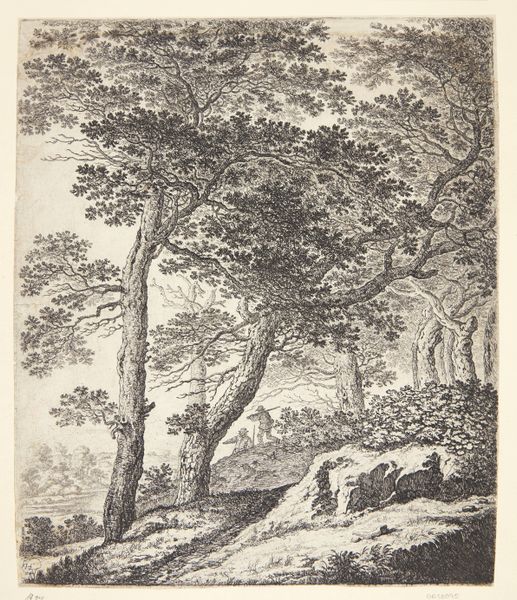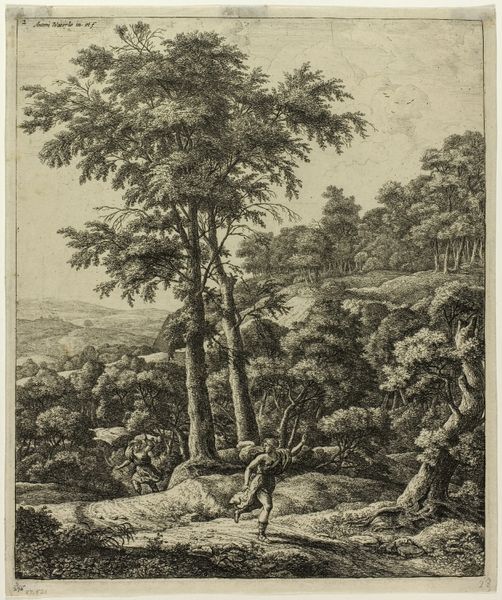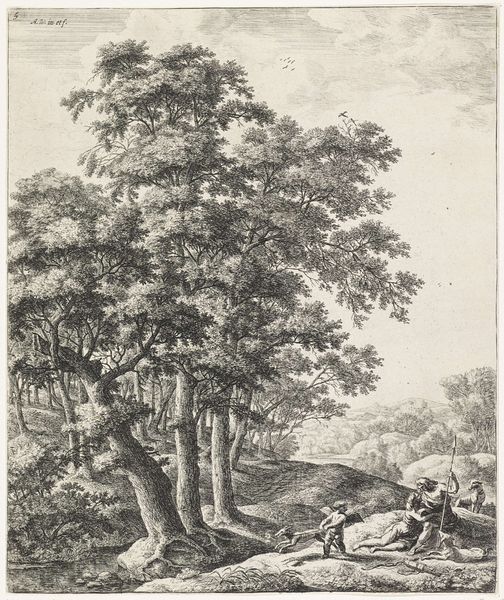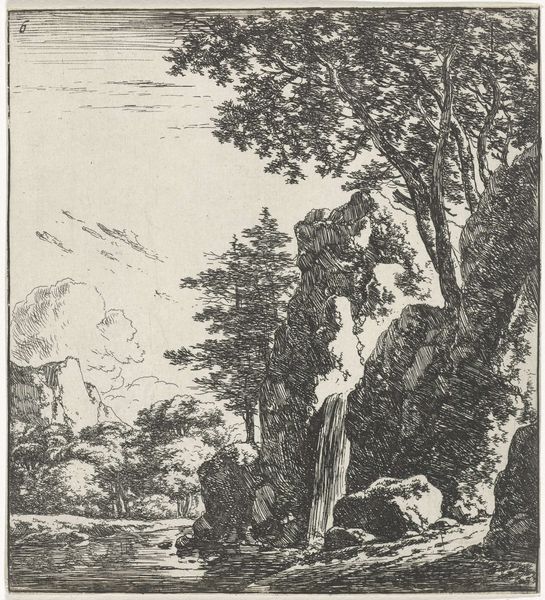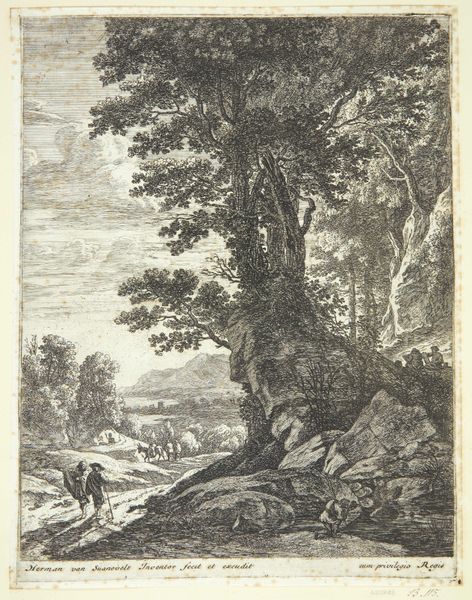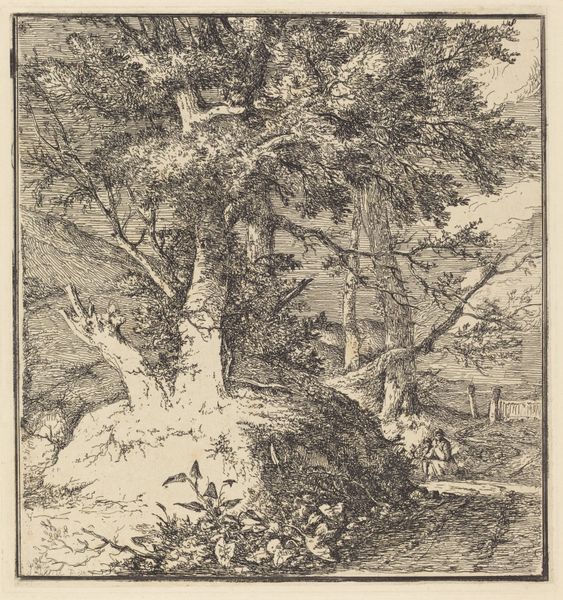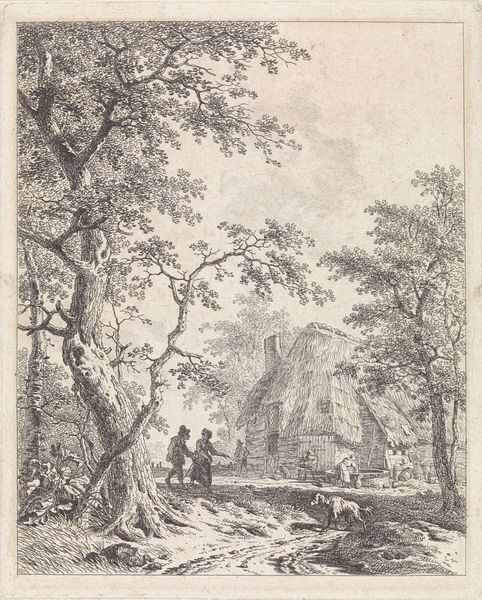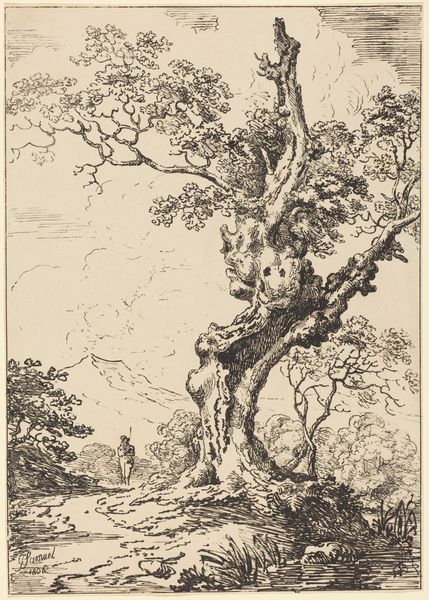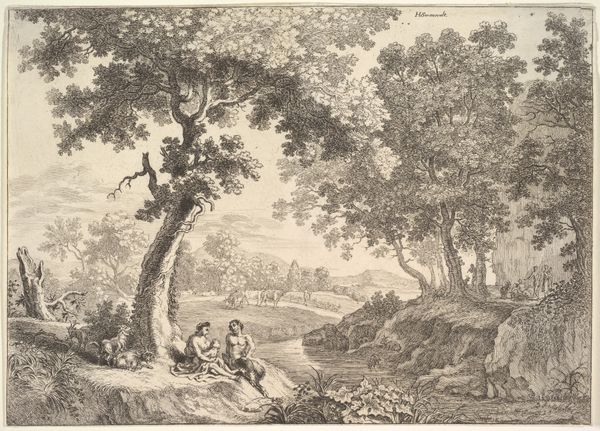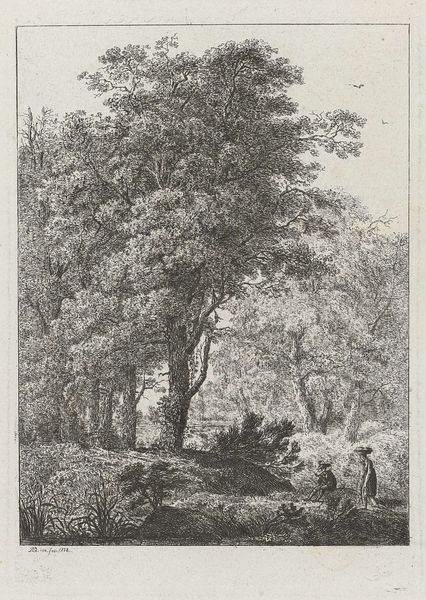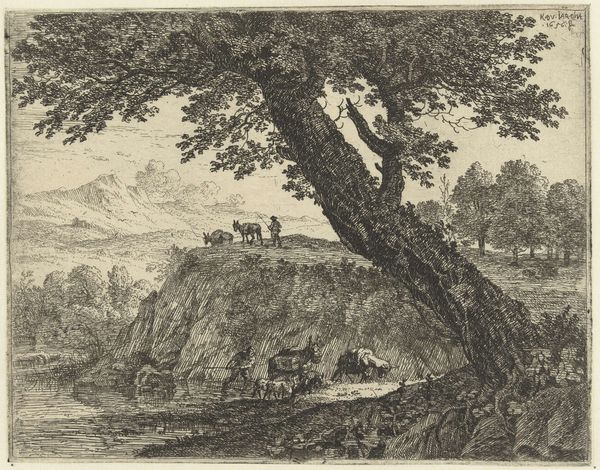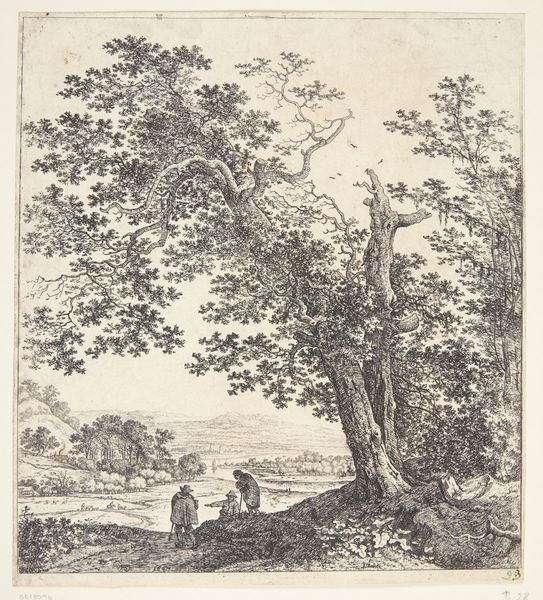
drawing, ink, pencil
#
drawing
#
pen drawing
#
pen illustration
#
pen sketch
#
landscape
#
figuration
#
ink line art
#
ink
#
romanticism
#
pen-ink sketch
#
pencil
#
line
#
pen work
Dimensions: height mm, width mm
Copyright: Rijks Museum: Open Domain
Editor: Here we have William Young Ottley's "Wilgenboom," created in 1828, using ink and pencil. The density of the lines really strikes me. What do you see in this piece? Curator: What I find most interesting about this work is its connection to the Romantic movement’s idealization of nature and the sublime. Consider the time: early 19th century. How do you think industrialization and urbanization may have affected the perception and representation of the natural world in art? Editor: It must have been a huge shift. I can see a desire to record something pure that felt like it was disappearing. Curator: Exactly! Ottley uses the willow tree – a common symbol in Romantic art - perhaps as an anchor. But it's not just a tranquil scene. Notice the almost feverish detail in the rendering. What does that suggest to you about the artist's perspective, and perhaps even the broader cultural anxiety of the period? Editor: The intense detail, almost chaotic, feels like a reflection of inner turmoil. I guess artists felt helpless against the rapid societal changes. Curator: That's a brilliant insight. The tree could then be a metaphor for resilience. This image acts as a historical record reflecting the complex relationship between humans and the environment, made visible by art of that era. What will images tell of our present era in a century? Editor: It's a sobering thought! I had not considered how socio-political changes would have impacted something that appears so simple on the surface! Curator: It all comes down to visual imagery, its politics, and what kind of role we grant to artists who reveal this intersection through their art. Editor: Thank you; it's a new way to understand Ottley's work. Curator: Indeed! Considering art within the broader cultural context allows us to grasp it much better.
Comments
No comments
Be the first to comment and join the conversation on the ultimate creative platform.
